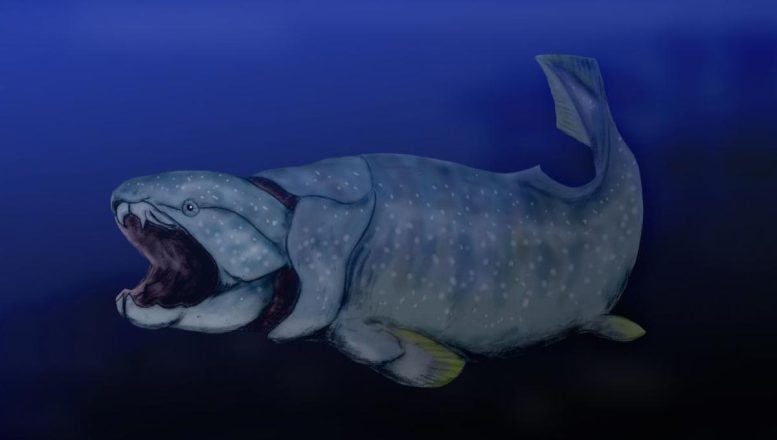One of the main ways that scientists look for extraterrestrial life is by detecting radio waves. When people hear this, they often think it involves snooping on aliens, says Chenoa Tremblay. “That’s not what we’re doing. We’re not trying to eavesdrop or invade anybody’s privacy.” Instead, Tremblay uses radio telescopes to study molecules in the gas layers around stars. A radio astronomer, she works for the SETI Institute in Mountain View, Calif.
Tremblay relies on a technique called spectroscopy. When different molecules interact with energy from nearby stars, the molecules absorb and re-emit that energy in specific frequencies. “Every molecule has its own fingerprint,” she says. Some, such as water and methane, act as biosignatures. These are signs that life may be producing these molecules on exoplanets.
Tremblay uses the Karl G. Jansky Very Large Array telescope in New Mexico to pick up these signals. “We [then] use computers to translate that information into images using complex mathematics,” she says. That lets her team “study the universe in a way that we can’t use our eyes to do.” In this interview, Tremblay shares her experiences with Science News Explores. (This interview has been edited for content and readability.)
What inspired you to pursue your career?
I grew up in a small town of about 600 people in New Hampshire. There wasn’t a lot of expectation of girls doing much outside of the home. But I was a naturally very curious child. Throughout high school, I tried exploring subjects I liked. In general, learning was hard for me most of the time. But math was always fairly easy for me, and I enjoyed chemistry.
I decided to study business and accounting in college. It seemed logical, but I really wasn’t sure what I’d do with it. I ended up hating the coursework. My roommate was studying chemistry, and I found myself helping her with her homework. My friends finally convinced me that I should study chemistry instead.
After earning my bachelor’s degree, I worked at various companies doing research for about 25 years. That’s where I realized that I didn’t have to just study the chemistry of things here on Earth. I could study the chemistry of the universe.
 The Karl G. Jansky Very Large Array is located in the desert of New Mexico to avoid radio interference from cities or humidity in the air.NRAO/AUI/NSF, Jeff Hellerman
The Karl G. Jansky Very Large Array is located in the desert of New Mexico to avoid radio interference from cities or humidity in the air.NRAO/AUI/NSF, Jeff Hellerman
How did you get to where you are today?
I started volunteering for university projects to learn from mentors. That helped me figure out how to become a radio astronomer. In 2016, I got into a doctoral program for physics and astronomy in Australia. In high school and my first years in college, I really struggled with physics. So it’s really funny that I ended up with a Ph.D. in the subject. At some point in the learning process, things just started to click.
During my program, I was using a brand-new radio telescope in Western Australia. We used a set of wavelength ranges that we hadn’t used before. We found some molecules that are super important to the early stages of life. But these popped up in environments that wouldn’t necessarily indicate life, like around a newborn star. That suggested that these molecules do exist and could be available for life to develop elsewhere.
Understanding light and other forms of energy on the move
This is also when I started looking into technosignatures. These are signs of technology from far-off worlds. The techniques used to study the chemistry of space are very similar to those used to study whether technology exists beyond Earth. We can look for both in the same data set by analyzing them in slightly different ways. So, I ended up using the telescope data to study both.
After finishing my Ph.D., I continued some of that work on a different telescope, the Australian Square Kilometer Array Pathfinder in Western Australia. I then moved back to New Mexico to develop a brand-new computer system on the Very Large Array. It’s an iconic telescope that has appeared in different movies and TV shows.
Right now, we’re using it to conduct one of the largest surveys for technosignatures ever. That’s because we no longer have to dedicate time to using the telescope ourselves. Instead, we rely on commensal observations. That’s when we receive a copy of the data from other projects using the telescope. Every time the telescope’s on, we get to use the data to search for technosignatures.
 These antennae are part of the Murchison Widefield Array in western Australia. Radio telescopes like this one detect radio waves through antennae tuned to specific frequencies.Robert Hollow
These antennae are part of the Murchison Widefield Array in western Australia. Radio telescopes like this one detect radio waves through antennae tuned to specific frequencies.Robert Hollow
What has you excited about your field right now?
I’d say being able to build these commensal systems and sharing data. We need to spend as much time looking at as much of the sky as possible. That involves using as many wavelengths as we can. Even if a civilization is sending out a bright signal, we can’t expect that beacon to be on all the time.
Our galaxy alone is huge. If we had to take our turn on telescopes all the time, it might take up to 60 years to observe every star once. And that might be something like every star within 100 light-years of us (about 60,000 stars).
We are using the Very Large Array telescope in New Mexico and the MeerKAT telescope in South Africa for these commensal programs. These two let us look at both the northern and southern hemispheres, as well as a little bit of overlapping sky. This gives us one of the broadest views that we’ve ever accomplished in trying to find our place in the universe.
What piece of advice do you wish you’d been given when you were younger?
The career you decide on now doesn’t have to be what you do later. You can change your mind and switch paths. My parents’ generation expected that you stay at the same job until you retire. There wasn’t this understanding that you could switch careers if you were unhappy.
You also don’t have to know what you want to do from a young age. My siblings knew since they were little what exactly they wanted to do. I sometimes feel like I’m still not 100 percent sure what I want to do. And that’s okay, too. You can explore what you find interesting about the world.













 Bengali (Bangladesh) ·
Bengali (Bangladesh) ·  English (United States) ·
English (United States) ·